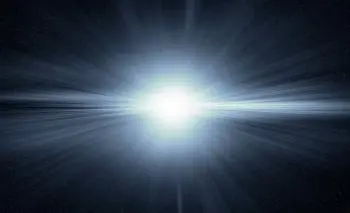
The solar system is an amazing corner of the universe that is home to a variety of celestial bodies, from the bright Sun to the planets, moons, asteroids and comets that orbit it.
Throughout history, scientists have developed various theories about the origin of our solar system, and as research progresses, our understanding of this cosmic enigma constantly evolves.
Solar Nebula: the birthplace
The most widely accepted theory of the origin of the solar system is the solar nebula hypothesis, which was proposed by mathematician and astronomer Pierre-Simon Laplace in the 18th century and later developed by other scientists.
According to this theory, the solar system formed from a vast cloud of gas and dust known as a solar nebula.
About 4.6 billion years ago, a disturbance in the solar nebula, possibly caused by a nearby supernova or a shock wave from a neighboring star, began the process of formation of the solar system.
This disturbance compressed parts of the nebula, causing gas and dust to condense into small clumps known as planetesimals. These planetesimals collided and merged over millions of years, forming planets, moons, and other celestial bodies.
Formation of the Sun and planets
At the center of the solar nebula, most of the material accumulated into a growing protostar that would eventually become our Sun.
Gravity in the protostar's core compressed hydrogen and helium, leading to nuclear fusion and the emission of light and heat. The Sun, in its current state, began to shine like a star.
Around the Sun, planets formed from planetesimals orbiting the young star. Terrestrial planets, such as Earth, Mercury, Venus and Mars, formed near the Sun, where high temperatures allowed the presence of lighter elements, such as silicon and iron.
Giant planets, such as Jupiter, Saturn, Uranus and Neptune, formed further away, where low temperatures allowed the accumulation of lighter gases, such as hydrogen and helium.
The role of comets and asteroids
In addition to the planets, the solar system is also populated by asteroids and comets, which are remnants of the formation of the solar system.
Asteroids are small rocks that primarily orbit in the asteroid belt between Mars and Jupiter, while comets are icy bodies that travel in elliptical orbits around the Sun.
Comets and asteroids are believed to be living fossils of the early solar system and may contain clues to the conditions that existed in the original solar nebula.
Space missions, such as the European Space Agency's Rosetta probe, have made it possible to study comets up close and obtain valuable information about the composition and history of our solar system.
Other theories of the origin of the Solar System
In addition to the solar nebula hypothesis, there are other alternative theories and models about the origin of the solar system. Although the solar nebula hypothesis is the most accepted, these alternative theories have been proposed and debated by the scientific community over time.
Some of these theories are the following:
Binary star capture
This theory suggests that the Sun was originally part of a binary star system, that is, two stars orbiting each other.
According to this hypothesis, the Sun captured its stellar companion in a close orbit and then ejected the other star, leaving only the Sun in its current position.
Impact of a neighboring star
Some scientists have put forward the idea that a nearby star passed close enough to our solar system in its early stages to disturb the solar nebula and cause the formation of the planets and the Sun.
This theory suggests that the neighboring star could have left its gravitational influence on the orbit and composition of the bodies in the solar system.
Formation of planets by fission
This theory proposes that planets formed through the splitting of a star into two or more parts due to rapid rotation.
However, this theory has been widely discarded because it does not satisfactorily explain the composition and orbits of the planets.
Chaotic formation theory
Some computer models suggest that the solar system formed from a highly chaotic solar nebula rather than a uniform nebula.
This theory involves complex interactions between gas and dust particles, which led to the formation of planetesimals and planets in a less ordered manner than the solar nebula hypothesis.